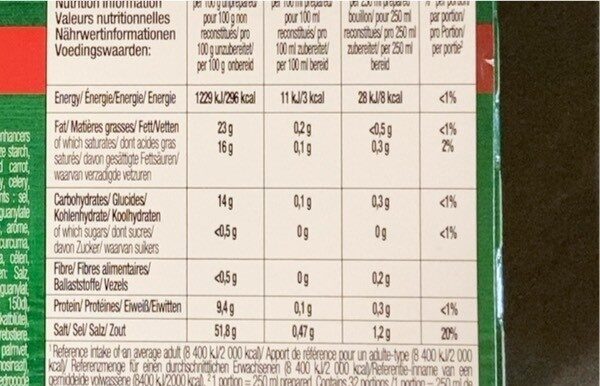Bouillon déshydraté saveur boeuf - Knorr - 72g
This product page is not complete. You can help to complete it by editing it and adding more data from the photos we have, or by taking more photos using the app for Android or iPhone/iPad. Thank you!
×
Barcode: 8886467002144 (EAN / EAN-13)
Quantity: 72g
Packaging: fr:Boîte carton à recycler, fr:Papier à recycler
Brands: Knorr
Categories: Dried products, Dried products to be rehydrated, Broths, Dehydrated broths, Beef broth, Bouillon cubes, Bouillon pots, Broth stock, Rehydrated broth stock
Labels, certifications, awards:
Halal
Stores: Action
Countries where sold: France
Matching with your preferences
Environment
Carbon footprint
Packaging
Transportation
Threatened species
Report a problem
Data sources
Product added on by kiliweb
Last edit of product page on by noob10.
Product page also edited by epfoodeye, roboto-app, yuka.sY2b0xO6T85zoF3NwEKvlml6a8TinQnnODPQwFCE2s2JE8LsaPFJ0NbWKqs.








